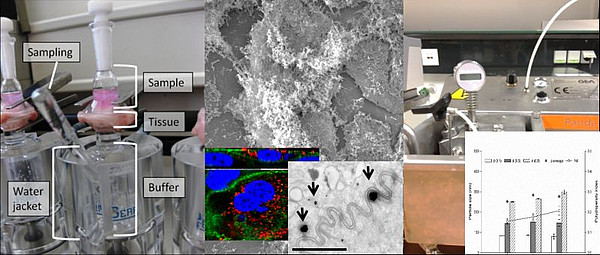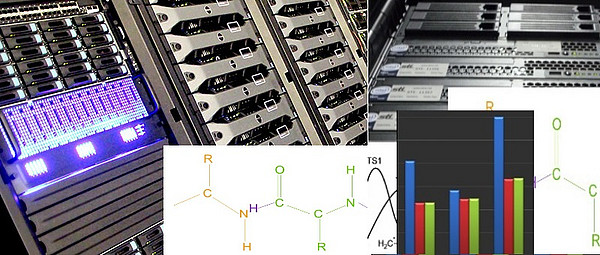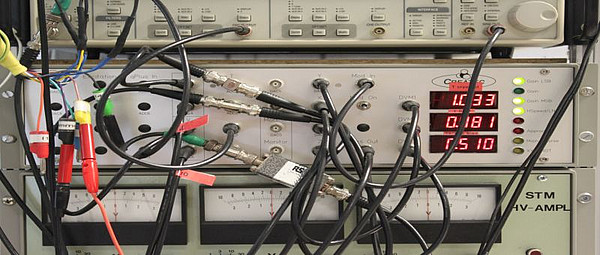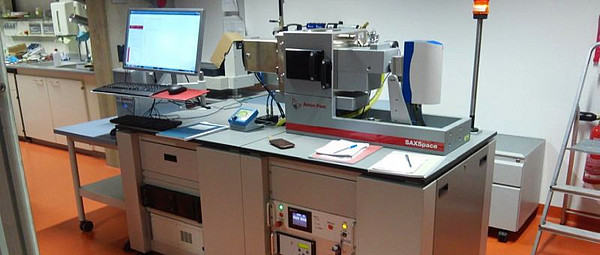Members
Peter Banzer is an experimental physicist by training and heads the group ‘Optics of Nano and Quantum Materials’ at the University of Graz. Together with his team he is studying the interactions of structured light and structured matter at nanoscale dimensions. Engineered light fields are an intriguing playground paving the way for the exploration of novel fundamental effects and phenomena as well as versatile applications in the field of nanometrology, sensing, imaging and beyond. In this context, the design and optical properties of nano and quantum materials play a major role, calling also for the development and study of novel material platforms.
Selected techniques:
- Generation and control of complex structured light fields at the
macro- and nanoscale
- Custom-built experimental setups for studying structured
light-matter interactions at the single particle level
-- back focal plane polarimetry
-- structured light spectroscopy of individual nano-objects
-- tailored light sources
-- optical trapping and manipulation
- Analytical and numerical tools for light-matter interactions
- Tailored Raman spectroscopy
- Photoacoustic and laser ultrasound-based imaging
Selected devices:
- Laser-scanning microscope
- Nano-scan microscopes
- Super-continuum light sources and tunable spectral filters
- Beam-shaper (phase, polarization)
- And more…
Thomas Weiss is a theoretical physicist at the University of Graz, where he leads the theoretical nanophysics group. His research focus is on theoretical nanooptics, which comprises topics such as resonantly enhanced light-matter interaction in chiral and achiral open systems, dielectric and plasmonic metasurfaces, optical fibers and waveguides. Possible applications are advanced optical sensors, integrated photonic circuits or enabling technologies for quantum devices.
Katalin Barta W is Professor of Organic Chemistry and Renewable Resources at the Institute of Chemistry, department of Organic and Biomolecular Chemistry, leading the unit Sustainable Catalysis. Research in the Barta group focuses on the development of sustainable catalytic methodologies for the valorization of renewable resources and platform chemicals derived therein. Research is fully committed to adhering to the main principles of green chemistry. Methods specifically focus on depolymerization and functionalization approaches and building sustainable biorefinery schemes aiming for connections to the circular economy. Catalysis disciplines include homogeneous and heterogeneous as well as nanoparticle catalysis with recent interests in single atom catalysis. Core focus is to develop robust catalytic systems that are compatible with the inherent complexity of renewable starting materials. Consequently, nanoparticle catalysts are generated by various methods, including classical approaches related to heterogeneous catalysis as well as the use of alternative reaction media such as ionic liquids and deep eutectic solvents as stabilization gents for catalytically active nanoparticle systems.
A. Daniel Boese is a theoretical chemist in the Institute of Chemistry at the University of Graz. The main focus of his group is the development of electronic structure methods, as well as their assessment and application. The method development concentrates on density functional theory and modern embedding techniques, in which several, different electronic structure methods are combined. Both nanotechnology as well as supramolecular chemistry are based on a deep comprehension of intermolecular interactions, in which the group is specialized. The application of the abovementioned methods is extremely versatile and include for example the interactions between biological molecules up to the calculation of interfaces, such as surfaces coated by molecules as well as molecular crystals in the solid state.
David Clases leads the NanoMicroLab and aims to advance the characterisation and application of nano- and microscaled materials. The focus of his group is mainly based on elemental mass spectrometry and its application for single particle analyses as well as imaging approaches. Single particle approaches enable the establishment of multidimensional models providing perspectives on particle number concentrations, size/mass distributions as well as elemental compositions in individual particles. Currently these approaches are applied to pinpoint and characterise elusive structures in the environment. Elemental imaging, however, enables the quantitative resolution of elemental distribution in complex systems and is mainly applied to investigate integrated and discrete structures in biological specimens.
- Inductively coupled plasma – mass spectrometry (ICP-MS)
- ICP-MS, ICP-MS/MS, ICP-ToF-MS
- Single particle analysis
- Single particle analysis via SP ICP-MS
- Non-target screenings of unknown nano- and microparticles
- Establishment of models on particle number concentrations, size/mass distributions and compositions
- Analysis of almost all elements of the periodic table in single particles
- Analysis of traditionally inaccessible elements such as carbon, fluorine, sulphur, phosphorus
- Application of statistical tools for particle classifications
- Hyphenated Techniques
- Elemental Imaging via LA-ICP-MS
- Spatial resolution down to 5 µm
- Spatially resolved quantification of elemental distributions
- AF4-ICP-MS
- Size-based separation of particles and subsequent elemental characterisation
- LC-ICP-MS for speciation analysis
- Elemental Imaging via LA-ICP-MS
- Immuno-mass spectrometry
- Labelling and application of metal-coded antibodies
- Imaging of protein distributions
- Applications of functionalised nanoparticles
- Ultra trace analysis
- Trace analysis of elements with detection limits in the pg/g (ppt) range
Leonhard Grill is experimental physicist and head of the research group "Single-Molecule Chemistry" (details on http://www.nanograz.com) in the Physical Chemistry division at the University of Graz. His scientific interest is focussed on the investigation and controlled manipulation of single molecules at surfaces with scanning probe microscopy (STM and AFM) to gain fundamental understanding of physical and chemical process at the atomic scale. Molecules with specific mechanical, chemical, electronic, electric or optical functions are employed to study for instance molecular motion, chemical reactions or molecular switches and form molecular networks and wires.
Andreas Hohenau is an experimental physicist working in the research-field of plasmon nano-optics and surface enhanced Raman spectroscopy. His work is focussed on the exploration of the strongly enhanced interaction of light with molecules and colloidal semiconductor quantum dots in the vicinity of plasmonic nano-structures. Besides the
fundamental scientific interest, the research outcome is important for the development of, e.g., optical (bio-) sensors with improved sensitivity.
Ulrich Hohenester is a theoretical physicist at the Institute of Physics, Karl-Franzens-University Graz. His research focuses on the theoretical description and simulation of light and light-matter interaction at the nanoscale, in particular in the field of plasmonics. He works closely with experimental groups, for example with the nanooptics group of Joachim Krenn, and is co-author of the toolbox MNPBEM for the simulation of plasmonic nanoparticles, which is used by many research groups worldwide.
Sandro Keller is an experimental biophysicist and head of the Biophysics Division at the Institute of Molecular Biosciences (IMB) at the University of Graz. His research group investigates the dynamics and interactions of membrane proteins, which play key roles in cellular information exchange and material transport and are attractive drug targets. In order to study membrane proteins in detail, the research group develops and applies new nanotechnological techniques and numerous biophysical approaches and methods. In particular, so-called native nanodiscs are used to investigate membrane proteins under well-defined conditions that are nevertheless similar to the natural environment—namely, within a nanoscopic lipid bilayer.
Selected techniques:
- design and functionalization of new compounds using
organic synthetic chemistry to produce nanodiscs with
improved properties
- development and application of biophysical methods to study
the properties of proteins and lipids in nanodiscs
- application of nanodiscs to answer biomolecular questions,
such as exploring protein interaction networks and investigating
drug targets
Selected instrumentation:
- fluorescence spectroscopy: steady-state and time-resolved,
at ensemble and single-molecule levels
- circular dichroism spectroscopy (CD)
- infrared spectroscopy (IR)
- calorimetry: isothermal titration calorimetry (ITC) and
differential scanning calorimetry (DSC)
- chromatography: preparative and analytical, for proteins,
polymers, and small molecules (SEC, GPC, IMAC, etc.)
- light scattering: static light scattering (SLS) and dynamic
light scattering (DLS)
- microfluidic diffusional sizing (MDS)
- hypothesis-based modeling of biomolecular interactions
Georg Koller is an experimental physicist at the Institute of Physics, surface and interface science group, at the University of Graz. His interest lies in the growth and electronic structure of organic nanostructures on metallic and metal-oxide surfaces and interfaces, from sub-monolayer to device relevant film thicknesses. The experimental approach uses ultra high vacuum preparation methods and electron spectroscopic characterization combined with imaging techniques. A special focus lies on experiments conducted at synchrotron radiation sources. Potential applications range from organic photovoltaics to catalytic systems.
- Ultrahigh vacuum techniques
- Physical vapour deposition of ultrathin metal oxide
and organic films
- Heteroepitaxy of inorganic/organic and organic/organic systems
- Photoelectron spectroscopies with a focus on angle-resolved
UV spectroscopy (ARUPS) and photoemission orbital
tomography (POT)
- Inverse photoelectron spectroscopy
- Experiments with synchrotron radiation
(X-ray absorption spectroscopy, ARUPS)
Stefan Kowarik is the head of the "Advanced X-ray scattering" group in the Department of Physical Chemistry at the University of Graz. Using surface sensitive X-ray scattering (XRD, GIXRD, XRR, GISAXS), processes such as nucleation or crystal growth are studied at atomic scale with time resolution and in situ. Another focus is on light-matter interaction, e.g. in the study of photoswitchable molecules or the optical control of crystal growth and polymorphism.
Joachim Krenn is the head of the Nanooptics Group at the Karl-Franzens Universität Graz. His research focuses on the elementary processes in the interaction of light and matter, in particular the optical properties of plasmonic nanostructures. Experimental methods include nanolithography, optical near field microscopy and spectroscopy and research cooperations on electron spectroscopy and ultrafast photoemission.
| Picture | Contact information |
|---|---|
| | Mösch-Zanetti, Nadia Carmen, Univ.-Prof. Dipl.-Chem. Dr.rer.nat. |
Georg Pabst is an experimental biophysicist at the Institute of Molecular Biosciences at the University of Graz. Research of his group is focused on biological membranes as meeting place of lipids, proteins and membrane active drugs on the one hand, and on the other hand as complex multifunctional nanoscopic interfaces for diverse (patho)physiological processes. The overall aim is to delineate the physics of functional membrane mimics to biomembrane function to aid the develop membrane active drugs. To achieve these goals the group applies an array of biophysical techniques. There is, however, a specific strength in X-ray and Neutrons small-angle scattering.
Peter Puschnig is a theoretical physicist at the Institute of Physics at Karl-Franzens University Graz. His research group is mainly concerned with the calculation of structural and electronic properties of materials based on ab-initio calculations in the framework of density functional theory. Crystalline solids, such as metallic alloys or molecular crystals, are studied as well as interfaces between organic molecules and inorganic surfaces and nanostructures such as nanotubes or nanoribbons. Of particular interest to the NanoGraz von consortium are its simulations of typical surface physics methods, such as scanning probe microscopy or angle-resolved photoemission spectroscopy, which provide a close link to the experimental investigations.
- Computations in the framework of density functional theory
(e.g. VASP-code)
- Quasi-particle band structure within many-body perturbation
theory (GW approximation)
- Excitonic effects in optical spectra (Bethe-Salpeter equation)
- Time-dependent density functional theory for describing
photoemission processes
- Inhouse developments for photoemission orbital tomography
Michael Ramsey is an experimental physicist in the surface science group at the Institute of Physics of the University of Graz. His research involves the in-situ preparation and investigation of the properties of organic thin films, nanostructures and their interfaces with a variety of ultra-high vacuum based techniques. A particular focus has been on controlling the growth, and determining the electronic structure of films of small device-relevant molecules from sub-monolayers to device-relevant thicknesses.
Eva Roblegg is pharmaceutical scientist at the Institute of Pharmaceutical Sciences, Pharmaceutical Technology and Biopharmacy at the University of Graz, Austria. Her research activities focus on building up an enhanced understanding of biological processes governing the main barriers that nanoparticles encounter during oral administration. In parallel, she is interested in finding multifunctional (nano-) drug delivery systems to improve treatment of oral diseases (e.g., oral mucositis) beyond the current standard of care.
Main Research Areas: Oral biological barriers (i.e., oral cavity, small intestine), nanoparticle interactions, drug delivery (nano- and microsystems), advanced manufacturing techniques (nano-extrusion, nano-printing)

- Ex-vivo models to study penetration/permeation of nanoparticles
- In-vitro models to study nanoparticle interactions with biological
barriers (cytotoxicity, cellular uptake mechanisms)
- Development and characterization of nano carriers for drug delivery
(polymeric and lipid systems, nanocrystals)
Martin Sterrer is head of the Surface and Interface Science group at the institute of physics at University of Graz. He research focuses on model catalysis of oxide-supported metal nanoparticles, investigations of processes at solid-liquid interfaces and adsorption studies on metal and oxide surfaces, for which he applies scanning tunneling microscopy, photoemission spectroscopy and vibrational spectroscopy as analytical methods.
- Preparation of model catalysts and inorganic-organic hybrid systems
- Ultrahigh vacuum technology
- Scanning probe microscopy
- Photoemission spectroscopy (XPS, ARUPS) and tomography
- Vibrational spectroscopy (IRRAS)
- Thermal desorption spectroscopy (TDS)
- Low energy electron diffraction (LEED)
- Electrochemical methods (cyclic voltammetry)
Svetlozar Surnev is an experimental physicist working in the field of surface physics. His research is focussed on the fabrication and surface properties characterization of oxide nanostructures on metal surfaces. He is author of more than 100 publications and has given more than 10 invited talks at international conferences. He participated in two NFNs and presently has one standalone project. He has supervised 4 PhD students in the last 5 years.
Andreas Zimmer is head of the department of Pharmaceutical Technology and Biopharmacy at the Karl-Franzens-University. Since more then 20 years his research group is investigating drug delivery and drug targeting systems with nanoparticles. These particles can be prepared from drugs like oligonucleotides or peptides by self-assembly or can be manufactured from peptides, proteins or lipids in advance and loaded with drugs subsequently. Currently the Zimmer group is focusing on drug targeting of oligonucleotides such as siRNA or microRNA for different applications. Modulating the lipid metabolism is one of the new targets for microRNA therapy but also other applications in cancer or viral infections were investigated before.
____________________________________________________________________
Send a message to all consortium members:
nanograzconsortium(at)list.uni-graz.at
Speaker
Univ.-Prof. Dr. Peter Banzer
peter.banzer(at)uni-graz.at
+43 (0)316 380 - 8560
Univ.-Prof. Dr. Thomas Weiss
thomas.weiss(at)uni-graz.at
+43 (0)316 380 - 5228




